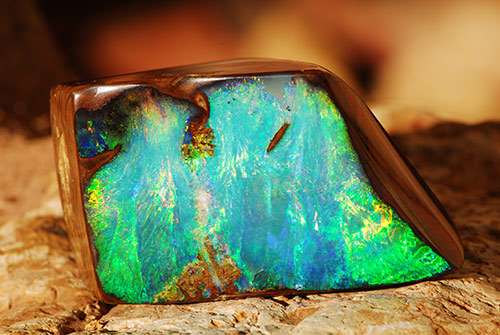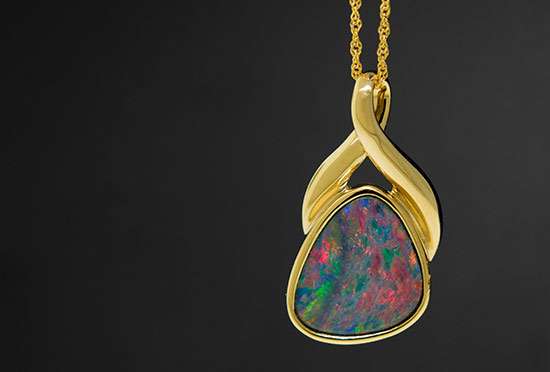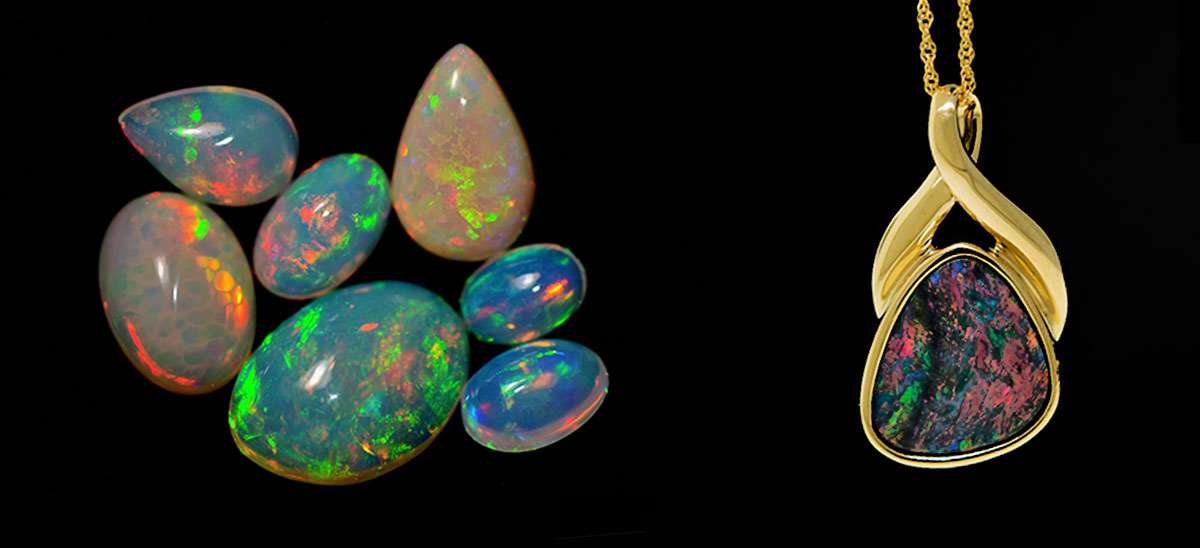Birthstone of the October natives, the opal is a unique and mysterious stone characterized by the play of colors with iridescence.
The opals are composed of silica beads and water that shows the spectral colors. The play of color comes from the diffraction of the light on the stone and it evolves according to the angle of observation. We are talking about dancing colors. Fascinating!

How to recognize the quality of a precious opal?
The two most famous varieties in jewelery are white opals (the background may be milky white or clear) and black opals, whose darker background is in gray, dark blue and more rarely, black .
Beauty depends mainly on the intensity of the colors. The effect must be on the entire surface of the stone, without extinction. Reds and oranges are in great demand. Observation in daylight is advised.

Intensity overrides the number of colors. Indeed, a stone with many colors but dull will be less sought after than a stone with few colors but very intense. Naturally, opalescence is sought for the entire surface of the stone.
The shape and size : the noble opals are cut in cabochon which must have a smooth surface without cracks and the proportions will be balanced. Often oval, round or pear shaped, a curved opal will be stronger than if it is thin. A free and original form can be sublimated by the creative talent and skillful hand of a jeweler.
Dimension and weight are above all a matter of budget!
Motifs : the motifs give a kind of personality to the stone. There is a wide variety of types of patterns. We talk about pinhead motif, mosaic or harlequin, ribbon or flame, straw, Chinese writings, etc. When it is very special, the stone becomes more rare … so more expensive!
Opals remain fragile. They are sensitive to heat and chemicals. They can become dehydrated and even get scratched with time. The iridescence will be affected. Fortunately, a lapidary of experience will be able to repolish the stone and give back all or part of its former glory!
To consolidate the opals too thin to be used directly in jewelry, they are glued on a support. We use a common opal or onyx for example to obtain a doublet. If we add a protective transparent layer on the opal, (rock crystal sometimes or more often, synthetic spinel), we obtain a triplet. These montages make it possible to obtain opals with natural color schemes at a price less than a naturally one-piece opal.

And what does the market say?
No authority decides the price of opals. Like any other commodity, opal is subject to the laws of supply and demand. The supply of opals is never guaranteed. Minor luck, variable costs, new discoveries, floods and weather conditions can affect production. Prices therefore depend on consumer trends and enthusiasm.
The peak of the Japanese miracle of the 1980s, would have pushed up prices. The bursting of the real estate and financial bubble of the 1990s will have had the opposite effect. In recent years, unprecedented demand for high quality opals has comforted producers. Currently, the price of some black opals rivals even that of diamonds.
Australian production began in 1890. Australia remains the leading producing country. Queen Victoria quickly began wearing black opals from Lightning Ridge to encourage her English colony. Coober Pedy for white opals and Lightning Ridge for black opals are two focal points for amateurs and miners.
The design houses Tiffany, Lalique and Cartier have introduced the romanticism of black opal by presenting them from 1900. They have thus contributed to “diffusion” opal fever that according to legend, would be eternal once caught!

